September 2022
1975 Triumph T160 Trident 750
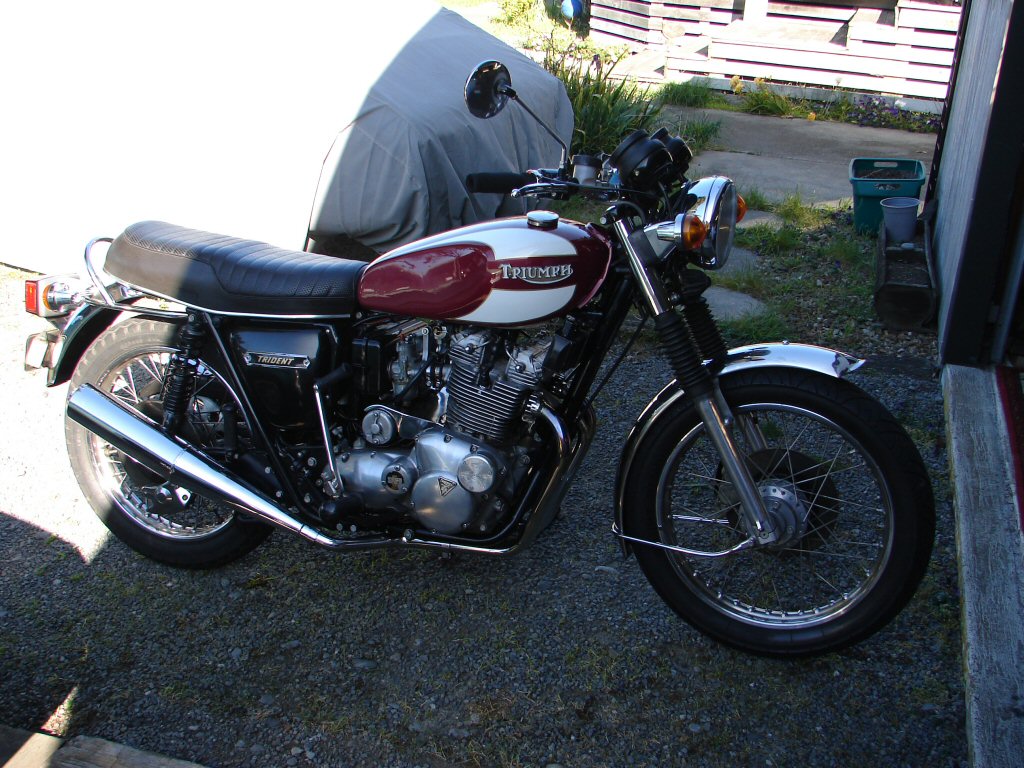
Kendrick's T160 continues its evolution in his ownership, and looks rather smart with the Les Williams "Legend" exhaust fitted. I originally acquired this exhaust complete from Les in 1991 to fit to my own T160. I then replaced it with a custom 3>4>1 built by Ross "Doc" Holliday which suited my exuberant cornering style by not dragging its chrome along the road as the Legend system had. The reason was that my T160 had the later rubber mounted footpegs, so the collector exit pipes were splayed rather wide to clear them. Kendrick has sorted this issue on his bike and they work well, and make a very pleasant noise.
The reason for the bike coming was a pernicious oil leak from the rocker box area, which has defied some poorly made copper base gaskets, and now, some nicely made aluminium gaskets. I like these gaskets as they usually provide both an oiltight engine, and a stable head bolt tension.
Unfortunately, the 'oiltight' was a fail, as some oil was finding its way out when running, but also when the bike was sitting, at least for a time after being used. While I figured I had taken all due care when assembling the head, the problem persisted and needed to be sorted.
I was suspicious of the cap (allen) screws which hold the outer edge of the rocker boxes to the head, as they seemed to have a slight drip of oil beneath the threads in the head. Oil pools in the recesses where the heads of these screws sit, so could likely be responsible for the leaking after use scenario.
The screws have an alloy washer beneath their heads, which squashes out after tightening/retightening when attending to a new head gasket fitment. Besides this, I add a smaer of silicon sealant down the screw threads during the final head retighten. It seemed odd that a leak would overcome these measures, but perhaps there was something else in play. Time to remove the rocker boxes.
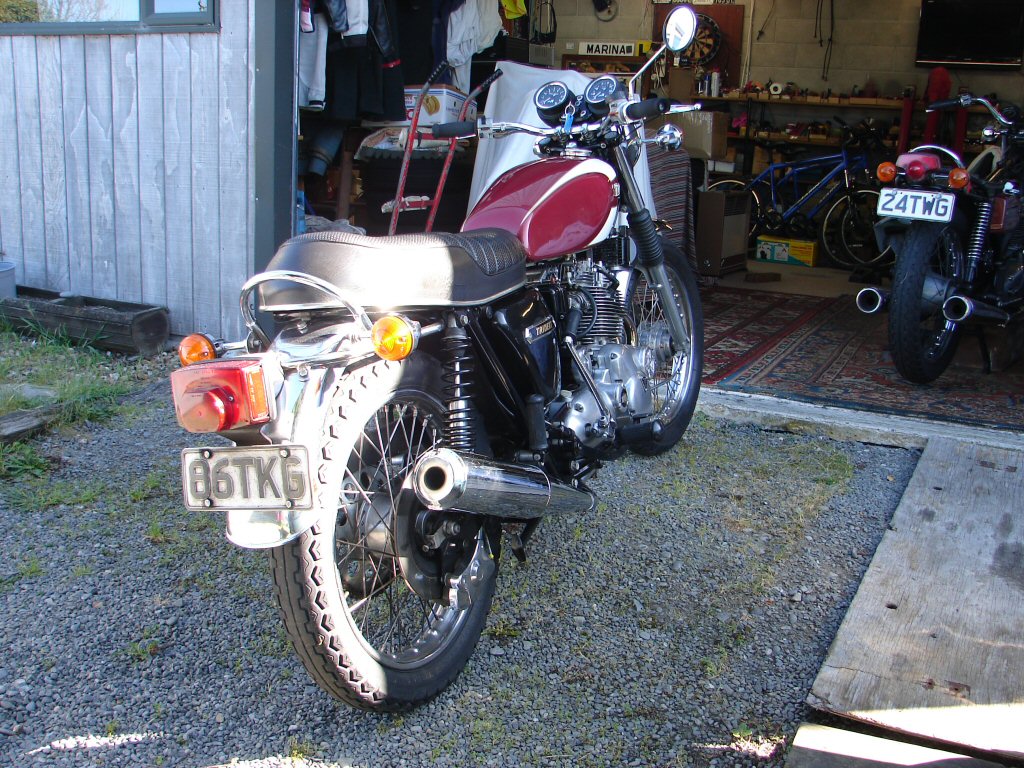
Removing the allen screws was enough proof. Firstly, they were not tight, so something had caused them to loosen. Secondly, they had the remnants of silicon sealant on the threads, but hot oil had laid waste to any hope of sealing.
Further investigation revealed something more significant. From the factory, the alloy washers fitted were a clearance fit in the recess allowed for the cap screw head. This meant that when crushed, they became a firm fit to both the rocker box alloy recess, but also the threads of the screws. However, the modern 'replacement' parts are not at all these dimensions. They are extremely thin surface area washers, so that when they are crushed, they simply spread, but with no limit imposed.
What this means, is that the washers fail to provide a stable base for the screw tension to use as a base reference. They simply spread further and further, as they lack enough area to reach the limits of the recess they reside within. Presumably the fact that the screws are no longer 'tight', the expansion and contraction of repeated heat cycles voids the possibility of the sealant being able to remain intact, so the game is up.
My current 'modus operandi' when fitting a head is to tighten the cap screws to what I consider maximum safe tension, then run the engine several times - including a brief test ride, before removing the screws completely during a head retighten, clean threads and bores, then add silicon sealant in the understanding that the alloy washer 'crush' has been completed.
It seems that with the most recent iterations of the washers, the process may not be complete at all. I repeated this entire process again on the T160.
The finished product now looked like this..
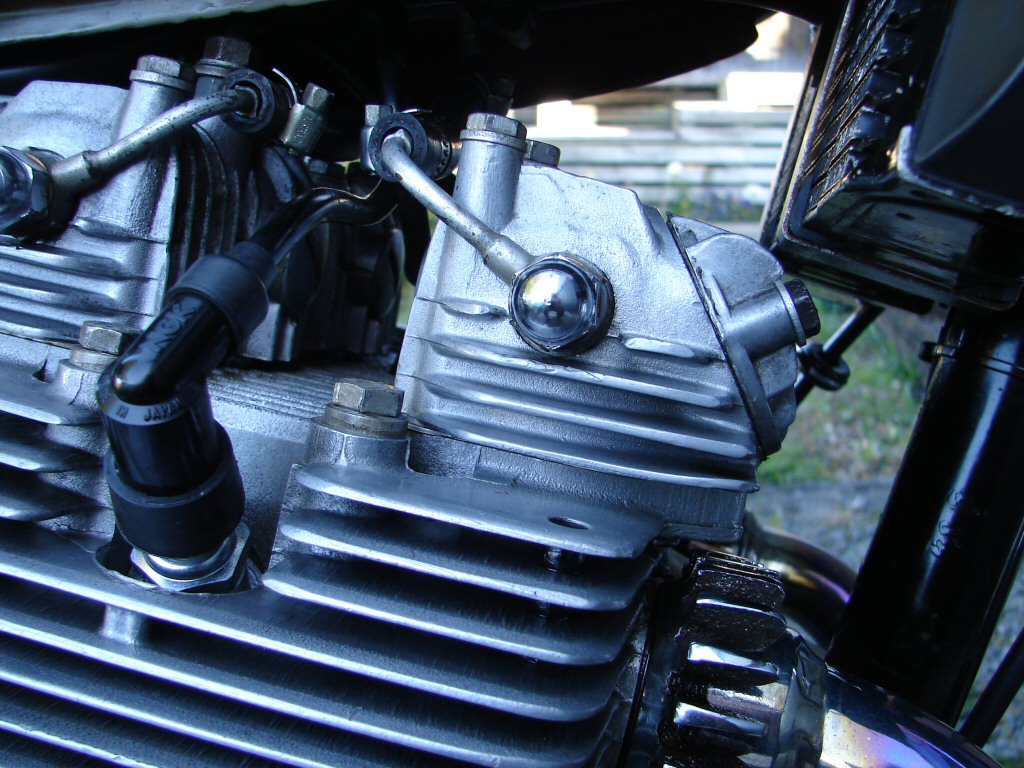
A somewhat more significant test ride was completed, and the head area looked like this..
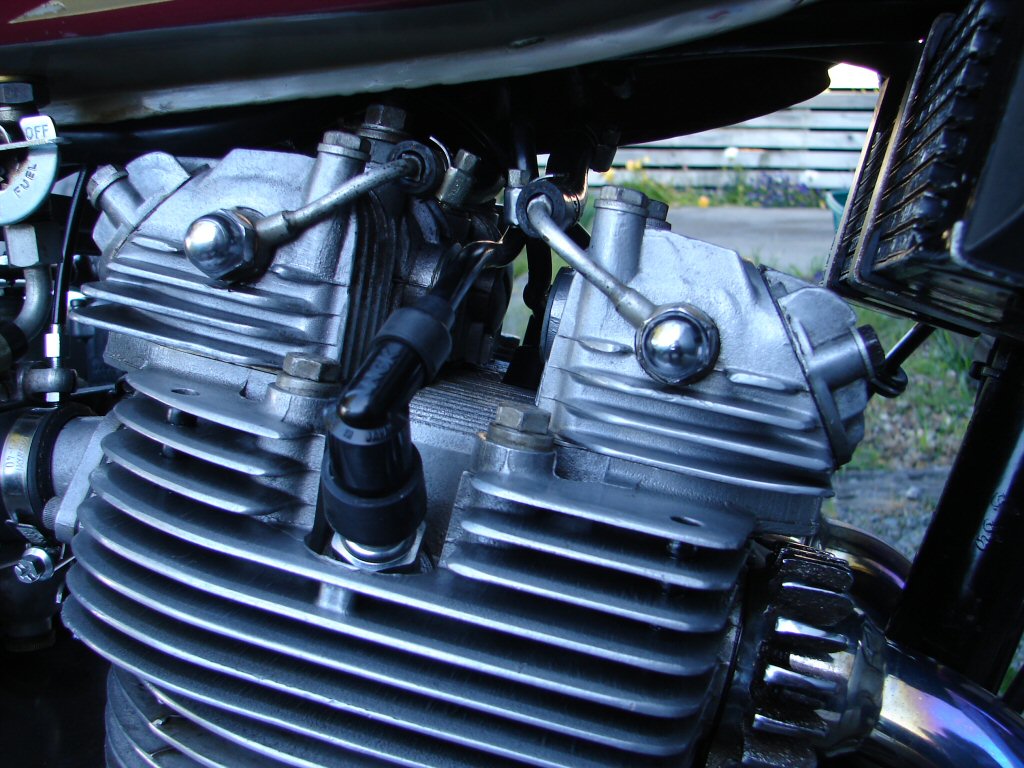
No signs of any oil now, although I imagine I got the same initial result the first time.
We will keep an eye on how this develops, for another fail will necessitate finding some washers of original spec.
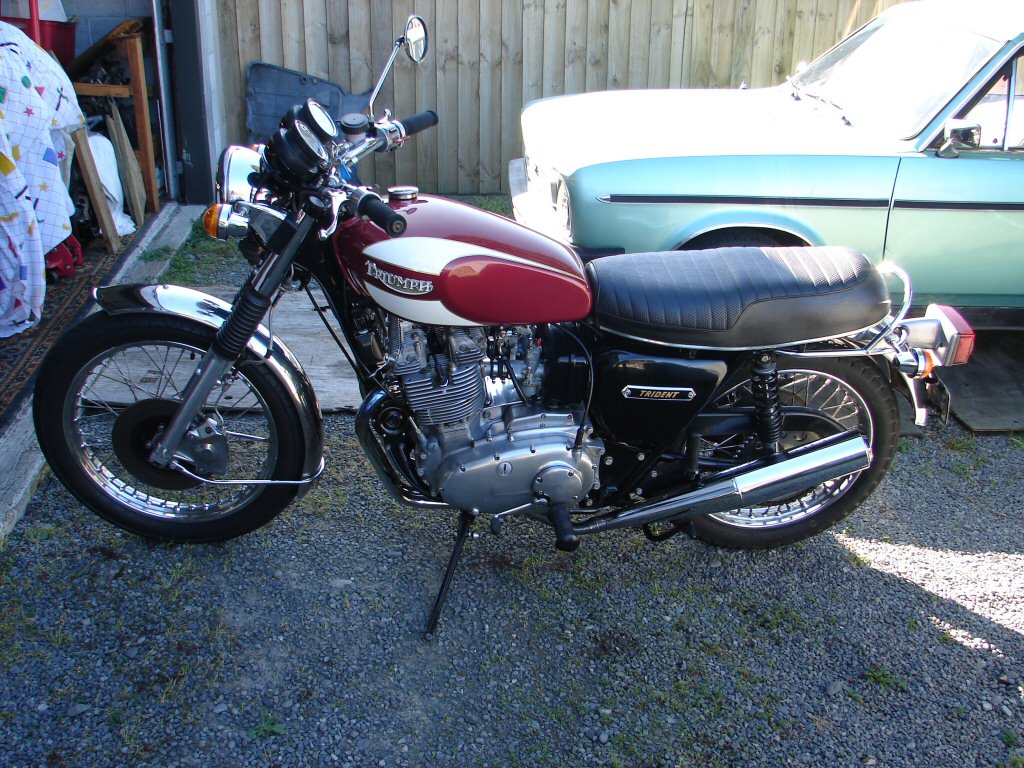
So off it goes.
When Kendrick is ready...